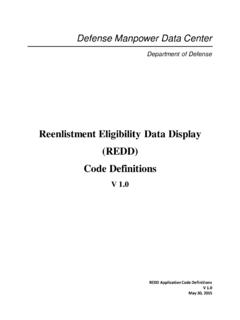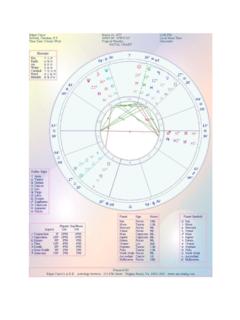Transcription of REDD - Indigenous Environmental Network
1 NOREDD papersvolume onenovember 2011 Table of contentsAcknowledgments, Contributors and Organizations 4 Introduction Africa 8 Introduction General 9 SECTION 1 redd : A Threat to Indigenous Peoples, Local Communities, Forests, Our Climate, and Your Future Why redd / redd + is NOT a Solution 13 What are carbon offsets? 26 Fast Forest Cash: How redd + will be market-based 27 Seeing the Forest for the Trees 34 SECTION 2 Industrial Expansion: who benefits from redd ?Worst redd -type projects affecting Indigenous Peoples 45 The link Between redd and genetically engineered trees 49 Identifying Violations of Indigenous Peoples Rights by redd -type projects A Quick Reference Guide to UNDRIPs 51 Funds and Phases: Prep Cooks, Assembly Plant and Midwives for Carbon Market redd 57 SECTION 3 Voices from the No redd FrontlinesQuote from International Indigenous Peoples Forum on Climate Change 64 Democratic Republic of Congo Slaving on the Plantation?
2 65Do Trees Grow on Money? 69 Peru Colonizing territories with redd : An Australian Carbon Cowboy and the Mats s People in the Peruvian Amazon 76 Nigeria/Indonesia Shell Bankrolls redd 79 CONAI Letter 82 Further Information 84illustration: Melanie Cervantes4acknowledgements, contributors, and organizationsEditor: Hallie Boas Design and layout: Josh Illustration: Santiago ArmengodPrinter: Charles Overbeck/Eberhardt Press, Portland, Oregon USA Thank you to Tamra Gilbertson, Joanna Cabello, Tom BK Goldtooth, Alberto Saldamando, Indigenous Environmental Network , Anne Petermann, Orin Langelle, Justseeds Artists cooperative, Melanie Cervantes, Molly Fair, Roger Peet, Favianna Rodriguez, Pete Yahnke Railand, Erik Ruin, and a special thanks to the No redd Platform for inspiring the creation of this project and to all the groups and peoples involved in resisting redd !
3 The No redd Platform is a loose Network of researchers, activists, orga-nizations and movements that work together by sharing information, organiz-ing collective strategies and supporting each other. By connecting with global justice movements committed to climate, Environmental and social justice, the No redd Platform aims to expose the injustices inherent in redd + projects globally and highlight the impacts on and resistance of Indigenous Peoples and forest- dependent communities. The NO redd Papers Volume I is based on the No redd , a Reader, pro-duced by the Indigenous Environmental Network and Carbon Trade Watch with the No redd Platform in November 2010. Several of the articles are reproduced in this publication. The original No redd , a Reader was edited by Joanna Cabello and Tamra Gilbertson from Carbon Trade Watch and translated by Joanna Cabello, Paula Derregibus, Tamra Gilbertson, Kerin Gould and Nilo Cayuqueo of the Abya Yala Nexus, Jorge Glackman, Bea Martinez, Lori Nordstrom, Octavio Rosas Landa, Bea Sanchez, Cassandra.
4 The original publication was peer-reviewed by: Patrick Bond, Ricardo Coelho, I aki Barcena, Cinthia Delgado, Martin Mantxo, Helena Paul, Mariel Vilella and proof-read by: Mooness Davarian and Diana Endara DeMeo and Beatriz Martinez. You can download the original at Cabello is part of the Carbon Trade Watch collective. She has been involved in social and Environmental issues for the last seven years. She has an MA in Politics of Alternative Development from the Institute of Social Studies in The Hague, the Netherlands, and a Bachelor s Degree in Social Communications from the Universidad de Lima, Conant is the author of A Community Guide to Environmental Health (2008) and A Poetics of Resistance (2010), and is the Communications director of Global Justice Ecology Gilbertson is a co- founder of Carbon Trade Watch and co-author of Carbon Trading: How it works and why it fails.
5 She is a founding member of the Durban Group for Climate Goldtooth is the Executive Director of the Indigenous Environmental Network (IEN), headquartered at Bemidji, Minnesota. A so-cial change activist within the Native American community for over 30 years, he has become an Environmental and economic justice leader, locally, region-ally, nationally and internationally. He is the co-Chair and co-founder of the Environmental Justice Climate Change Initiative and co-Chair of the Honor The Earth campaign in the US and is active with many Environmental and social justice organisations besides Menne is the project coordinator of the Timberwatch Coalition, South Africa and the Africa Focal Point for the Global Forest Coalition. His focus is on creating awareness of the socio-ecological impacts of industrial-scale monocultures, in particular timber plantations that destroy forests and grasslands, and the ways in which timber processing at pulp and paper mills harms people and the environment.
6 Anne Petermann is the Executive Director of Global Justice Ecology Project. She is also the Coordinator of the STOP Genetically Engineered Trees Campaign. She has been involved in forest protection and Indigenous rights issues since 1991 and climate justice since Sharife is the Southern Africa correspondent for The Africa Report, Visiting Scholar at the Center for Civil Society (CCS) and contribut-ing author to the Tax Justice Network (TJN).OrganizationsCarbon Trade Watch (CTW) aims to provide a durable body of research which ensures that a holistic and justice-based analysis of climate change and Environmental policies is not forgotten or compromised. As part of our solidarity work, CTW aims to accompany and support movements and com-munities in their local initiatives and struggles for Environmental and social justice. Importantly, the collective gathers and translates work with others in this field to help facilitate broader cooperation and understanding.
7 Justice Ecology Project explores and exposes the intertwined root causes of social injustice, ecological destruction and economic domination with the aim of building bridges between social justice, Environmental justice and ecological justice groups to strengthen their collective efforts. Within this framework, our programs focus on Indigenous Peoples rights, protection of native forests and climate justice. We use the issue of climate change to demonstrate these inter-connections. Global Justice Ecology Project is the North American Focal Point of the Global Forest Coalition. Environmental Network (IEN) is an organisation of native peoples of the Americas foreducation, coalition building and action. It has existed since 1990 and is based in northern organisation con-tinues its strong involvement in advocacy and community mobilisation on a variety of issues surrounding Environmental justice.
8 IEN has influenced public policy changes on tribal land, both in national and international arenas. Artists Cooperative is a decentralized Network of twenty-six art-ists committed to making print and design work that reflects a radical social, Environmental , and political stance. With members working from the , Canada, and Mexico, Justseeds operates both as a unified collaboration of similarly minded printmakers and as a loose collection of creative individuals with unique viewpoints and working methods. We believe in the transforma-tive power of personal expression in concert with collective action. To this end, we produce collective portfolios, contribute graphics to grassroots struggles for justice, work collaboratively both in- and outside the co-op, build large sculp-tural installations in galleries, and wheatpase on the streets all while offering each other daily support as allies and Coalition is a voluntary alliance of South African non-gov-ernmental organisations and individuals whose focus is on creating awareness of the socio-ecological impacts of industrial-scale monocultures, in particular timber plantations that destroy forests and grasslands, and the ways in which timber processing at pulp and paper mills harms people and the environment.
9 Timberwatch Coalition also works to expose the inherent un-workability and dishonesty of carbon sink plantation (CDM) and forest ecosystem ( redd +) offset projects; as well as other false climate change solutions like alternative energy generation from burning biomass derived fuels. We support genuine solutions to climate change such as increasing community resilience through forest and landscape restoration using local plants, and the restoration of com-munity-based ecological agricultural practices to replace corporate controlled industrial food women consulting while preparing traditional medicines. Photo: Langelle/GJEP-GFC8introduction: AfricaThe redd + Trojan HorseThe Timberwatch CoalitionCoP17 is uPon us, and there is a buzz in durban as people ready themselves for the coming days of ac-tion and camaraderie. We bid a warm welcome to all Climate Justice comrades from Africa, the global South, and the + does not feature much in the strategies of South African climate activists, simply because our local forests appear small and insignificant, and whatever might happen to them seems fairly inconsequential when compared to the global deforestation crisis.
10 However, many of us see redd + and other UN schemes to avoid reducing industrial carbon emissions as the greatest threats to a sustainable future for Africa s forest ecosystems, and its forest dependent communities, especially Indigenous Peoples, who have lived in harmony with Nature for countless political boundaries imposed onto Africa by its former colonial ex-ploiters have played a big part in maintaining their influence and control over the continent, long after giving so-called independence. This hangover is now playing itself out in ways that are far worse than during colonial times. Now instead of becoming indebted in financial measure, divided African nations are at risk of being stripped of their natural capital, through debt calculated in carbon units rather than dollars or euros. Precious African land, especially with fertile soils and abundant water, is now a sought-after prize for foreign governments and corporations; but more so where it is blessed with valuable timber and minerals.









